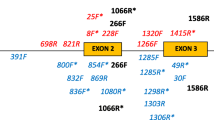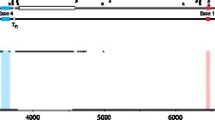Abstract
In light of the immunological importance of molecules encoded within the major histocompatibility complex (MHC), there are numerous studies examining the variability of these genes in wildlife populations. An underlying assumption in many of these studies is that MHC diversity invariably arises from a high level of allelic variation at a single gene locus, leading to widespread descriptions of thriving species with apparently limited MHC polymorphism. Indeed, in a previous study we failed to find sequence features compatible with traditionally diverse peptide-binding functions in MHC class II (DQA and DQB) genes in California sea lions and therefore expanded the search for polymorphism to the DRA and DRB genes. Our results show that, in contrast to Zaca-DQA, -DQB, and -DRA, Zaca-DRB has sequence features compatible with antigen binding and presentation. In fact Zaca-DRB constitutes a gene family, comprising at least seven loci, each of which exhibits limited variability, and which are present in variable configurations between individuals. This unusual mechanism for generating MHC DRB diversity is similar to that observed in the rhesus macaque, but has not been reported in any other species. The identification of a novel system of class II MHC variability in the California sea lion justifies new studies into the organizational basis of immunogenetic diversity in other marine species, and its role in infectious disease susceptibility.






















Similar content being viewed by others
References
Altschul SF, Gish W, Miller W, Myers EW, Lipman DJ (1990) Basic local alignment search tool. J Mol Biol 215:403–410
Bodmer JG, Marsh SGE, Albert ED, Bodmer WF, Bontrop RE, et al (1999) Nomenclature for factors of the HLA system, 1998. Tissue Antigens 53:407–446
Bontrop RE, Otting N, de Groot NG, Doxiadis GGM (1999) Major histocompatibility complex class II polymorphisms in primates. Immunol Rev 167:339–350
Bowen L, Aldridge BM, Stott JL, Gulland F, Woo J, Van Bonn W, DeLong R, Lowenstine L, Johnson ML (2002) Molecular characterization of expressed DQA and DQB genes in the California sea lion (Zalophus californianus). Immunogenetics 54:332–347
Brown JH, Jardetzky TS, Gorga JC, Stern LJ, Urban RG, et al (1993) Three-dimensional structure of the human class II histocompatibility antigen HLA-DR1. Nature 364:33–39
Calkins DG, McAllister DC, Pitcher KW (1999) Steller sea lions status and trend in Southeast Alaska: 1979–1997. Marine Mamm Sci 15:462–477
Doxiadis GG, Otting N, de Groot NG, Bontrop RE (2001) Differential evolutionary MHC class II strategies in humans and rhesus macaques: relevance for biomedical studies. Immunol Rev 183:76–85
Erlich HA, Gyllensten UB (1991) Shared epitopes among HLA class II alleles, gene conversion, common ancestry and balancing selection. Immunol Today 12:411–414
Escayg AP, Hickford JGH, Montgomery GW, Dodds KG, Bullock DW (1996) Polymorphism at the ovine major histocompatibility complex class II loci. Anim Genet 27:305–312
Fabb SA, Maddox JF, Gogolinewens KJ, Baker L, Wu MJ, Brandon MR (1993) Isolation, Characterization and evolution of ovine major histocompatibility complex class-II Dra and Dqa genes. Anim Genet 24:249–255
Fan W, Gutknecht J, Klein D, Mayer WE, Jonker M, Klein J (1989) Shared class II MHC polymorphisms between humans and chimpanzees. Hum Immunol 26:107–121
Felsenstein J (1993) PHYLIP: phylogenetic inference package version 3.5c. University of Washington, Seattle, Washington, USA
Gaur LK, Nepom GT (1996) Ancestral major histocompatibility complex DRB genes beget conserved patterns of localized polymorphisms. Proc Natl Acad Sci U S A 93:5380–5383
Gilmartin WG, Johanos TC, Eberhardt LL (1993) Survival rates for the Hawaiian monk seal (Monachus schauinslandi). Mar Mamm Sci 9:407–420
Gulland FMD, Koski M, Lowenstine LJ, Colagross A, Morgan L, Spraker T (1996) Leptospirosis in California sea lions (Zalophus californianus) stranded along the central California coast, 1981–1994. J Wildl Dis 32:572–580
Gustafsson K, Germana S, Hirsch F, Pratt K, LeGuern C, Sachs DH (1990) Structure of miniature swine class II DRB genes: Conservation of hypervariable amino acid residues between distantly related mammalian species. Immunology 87:9798–9802
Hoelzel AR, Stephens J, O’Brien SJ (1999) Molecular genetic diversity and evolution at the MHC DQB locus in four species of pinnipeds. Mol Biol Evol 16:611–618
Kennedy MC, Wang J, Zhang Y, Miles AP, Chitsaz F, Saul A, Long CA, Miller LH, Stowers AW (2002) In vitro studies with recombinant Plasmodium falciparum apical membrane antigen 1 (AMA1): production and activity of an AMA1 vaccine and generation of a multiallelic response. Infect Immun 70:6948–6960
King DP, Hure MC, Goldstein T, Aldridge BM, Gulland FM, Saliki JT, Buckles EL, Lowenstine LJ, Stott JL (2002) Otarine herpesvirus-1: a novel gammaherpesvirus associated with urogenital carcinoma in California sea lions (Zalophus californianus). Vet Microbiol 86:131–137
Klein J, Sato A (2000a) The HLA system: First of two parts. N Engl J Med 343:702–709
Klein J, Sato A (2000b) The HLA system: Second of two parts. N Engl J Med 343:782–786
Klein J, Takahata N (1990) The major histocompatibility complex and the quest for origins. Immunol Rev 113:5–26
Klein J, Figueroa F, Cohen N (1986) Evolution of the major histocompatibility complex. Crit Rev Immunol 6:295–386
Kumar S, Tamura K, Jakobsen I, Nei M (2001) MEGA2: molecular evolutionary genetics analysis software. Bioinformatics 17:1244–1245
Ledje C, Arnason U (1996) Phylogenetic analyses of complete cytochrome b genes of the order carnivora with particular emphasis on the caniformia. J Mol Evol 42:135–144
Lyons ET, Melin SR, DeLong RL, Orr AJ, Gulland FM, Tolliver SC (2001) Current prevalence of adult Uncinaria spp. in northern fur seal (Callorhinus ursinus) and California sea lion (Zalophus californianus) pups on San Miguel Island, California, with notes on the biology of these hookworms. Vet Parasitol 97:309–318
Mikko S, Spencer M, Morris B, Stabile S, Basu T, et al (1997) A comparative analysis of MHC DRB3 polymorphism in the American bison (Bison bison). J Hered 88:499–503
Mikko S, Roed K, Schmutz S, Andersson L (1999) Monomorphism and polymorphism at MHC DRB loci in domestic and wild ruminants. Immunol Rev 167:169–178
Murray BW, White B (1998) Sequence variation at the major histocompatibility complex DRB loci in beluga (Delphinapterus leucas) and narwhal (Monodon monoceros). Immunogenetics 48:242–252
National Marine Fisheries Service (1995) Status review of the United States Steller sea lion (Eumetopias jubatus) population. (Ref Type: Report) National Marine Mammal Laboratory, NMFS, Seattle, Wash
Paterson S, Wilson K, Pemberton JM (1998) Major histocompatibility complex variation associated with juvenile survival and parasite resistance in a large unmanaged ungulate population. Proc Natl Acad Sci U S A 95:3714–3719
Paul WE (1999) Fundamental immunology, 4th edn. Lippincott-Raven, Philadelphia
Reizis B, Eisenstein M, Mor F, Cohen IR (1998) The peptide-binding strategy of the MHC class II I-A molecules. Immunol Today 19:212–216
Robbins F, Hurley CK, Tang T, Yao H, Lin YS, Wade J, Goeken N, Hartzman RJ (1997) Diversity associated with the second expressed HLA-DRB locus in the human population. Immunogenetics 46:104–110
Robinson J, Waller M, Parham P, Bodmer JG, Marsh SGE (2001) IMGT/HLA Database — a sequence database for the human major histocompatibility complex. Nucleic Acids Res 29:210–213
Sarmiento UM, Sarmiento JI, Storb R (1990) Allelic variation in the DR subregion of the canine major histocompatibility complex. Immunogenetics 32:13–9
Schreiber A, Eulenberger K, Bauer K (1998) Immunogenetic evidence for the phylogenetic sister group relationship of dogs and bears (Mammalia, Carnivora: Canidae and Ursidae), a comparative determinant analysis of carnivoran albumin, c3 complement and immunoglobulin micro-chain. Exp Clin Immunogenet 15:154–170
Slade RW (1992) Limited MHC polymorphism in the southern elephant seal: implications for MHC evolution and marine mammal population biology. Proc R Soc Lond B Biol Sci 249:163–171
Slierendregt BL, Van Noort JT, Bakas RM, Otting N, Jonker M, Bontrop RE (1992) Evolutionary stability of transspecies major histocompatibility complex class II DRB lineages in humans and rhesus monkeys. Hum Immunol 35:29–39
Stern LJ, Brown JH, Jardetzky TS, Gorga JC, Urban RG, et al (1994) Crystal structure of the human class II MHC protein HLA-DR1 complexed with an influenza virus peptide. Nature 368:215–221
Svensson A, Setterblad N, Pihlgren U, Rask L, Andersson G (1996) Evolutionary relationship between human major histocompatibility complex HLA-DR haplotypes. Immunogenetics 43:304–314
Trites AW, Larkin PA (1996) Changes in the abundance of Stellar sea lions (Eumetopias jubatus) in Alaska from 1956 to 1992: how many were there? Aquatic Mamm 22:153–166
Van Den Bussche RA, Hoofer SR, Lochmiller RL (1999) Characterization of MHC-DRB allelic diversity in white-tailed deer (Odocoileus virginianus) provides insight into MHC-DRB allelic evolution with Cervidae. Immunogenetics 49:429–437
Van Eijk MJ, Stewart-Haynes JA, Lewin HA (1992) Extensive polymorphism of the BoLA-DRB3 gene distinguished by PCR-RFLP. Anim Genet 23:483–496
Vassetzky NS, Kramerov DA (2002) CAN — a pan-carnivore SINE family. Mamm Genome 13:50–57
Wagner JL, Burnett R, Storb R (1996a) Molecular analysis of the DLA DR region. Tissue Antigens 48:549–53
Wagner JL, Burnett RC, Works JD, Storb R (1996b) Molecular analysis of DLA-DRBB1 polymorphism. Tissue Antigens 48:554–561
Wagner JL, Burnett R, Storb R (1999) Organization of the canine major histocompatibility complex; current perspectives. J Hered 90:35–38
Yaeger M, Hughes AL (1999) Evolution of the mammalian MHC: natural selection, recombination, and convergent evolution. Immunol Rev 167:45–58
Yuhki N, O’Brien S (1997) Nature and origin of polymorphism in feline MHC class II DRA and DRB genes. J Immunol 158:2822–2833
Zinkernagel RM (1979) Associations between major histocompatibility antigens and susceptibility to disease. Annu Rev Microbiol 33:201–213
Acknowledgements
The authors thank Brett Russell Smith, Dr. Jodi Hedges, Dr. Elizabeth Buckles, Gina Vittori and members of the Laboratory for Marine Mammal Immunology, University of California-Davis, for their contributions to this project. We would also like to thank Dr. Martin Haulena, Denise Greig, and the staff and volunteers of The Marine Mammal Center, Sausalito, Calif., Tony Orr from the National Marine Mammal Laboratory, Seattle Wash., and Drs. Cynthia Smith and Eric Jensen, and Carrie Lomax from the Navy Marine Mammal Program for help in obtaining the samples used in this study. This study was supported by grants from the Office of Naval Resources Research (N00014-00-14-0763), the Marin Community Foundation, and Ecology of Infectious Disease Program (Fogarty International Center and US National Science Foundation) (DEB-0094919).
Author information
Authors and Affiliations
Corresponding author
Additional information
The studies were performed jointly in the laboratories of J.L. Stott and M.L. Johnson
Rights and permissions
About this article
Cite this article
Bowen, L., Aldridge, B.M., Gulland, F. et al. Class II multiformity generated by variable MHC-DRB region configurations in the California sea lion (Zalophus californianus). Immunogenetics 56, 12–27 (2004). https://doi.org/10.1007/s00251-004-0655-4
Received:
Revised:
Published:
Issue Date:
DOI: https://doi.org/10.1007/s00251-004-0655-4




